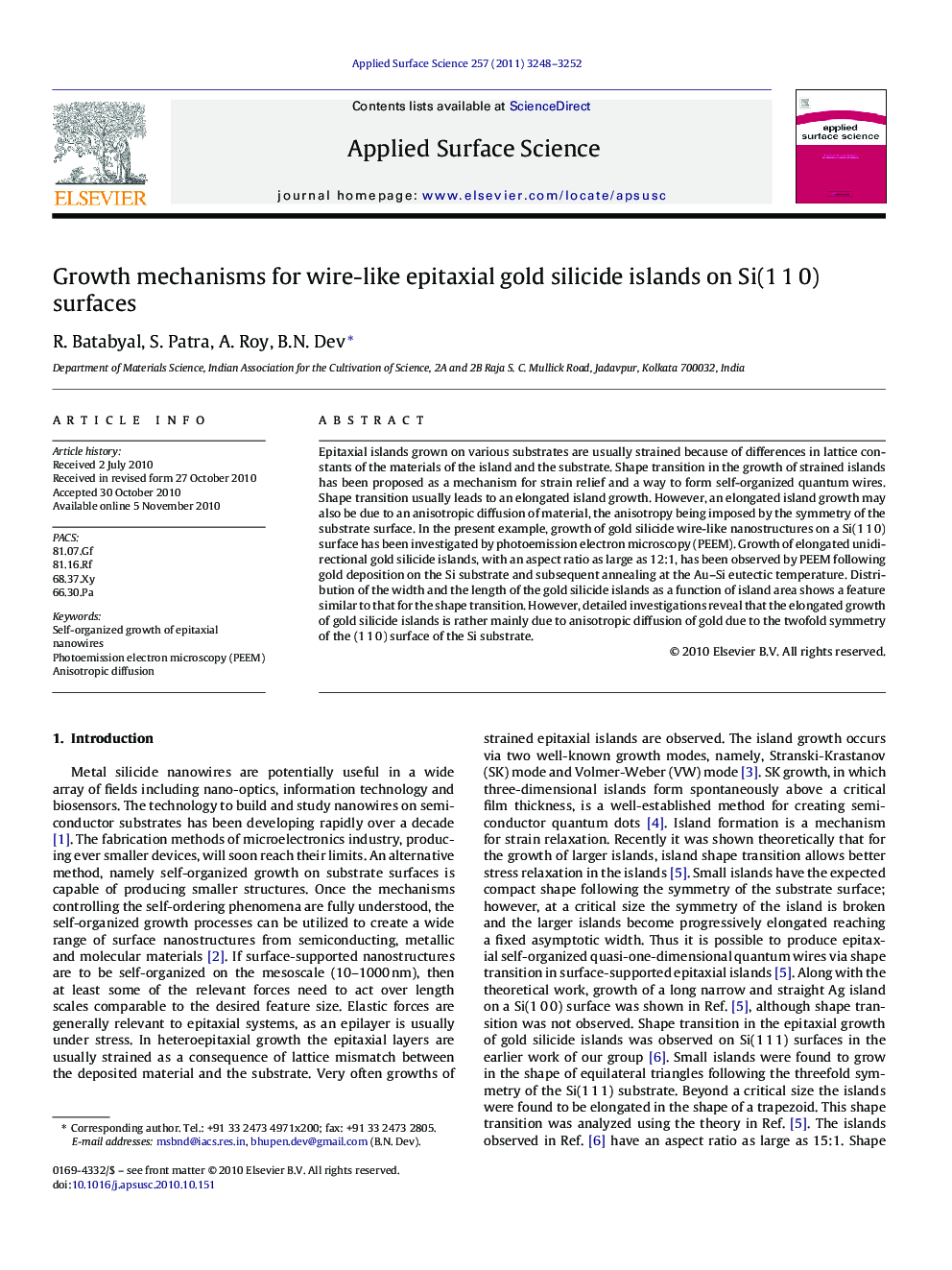| Article ID | Journal | Published Year | Pages | File Type |
|---|---|---|---|---|
| 5368029 | Applied Surface Science | 2011 | 5 Pages |
Epitaxial islands grown on various substrates are usually strained because of differences in lattice constants of the materials of the island and the substrate. Shape transition in the growth of strained islands has been proposed as a mechanism for strain relief and a way to form self-organized quantum wires. Shape transition usually leads to an elongated island growth. However, an elongated island growth may also be due to an anisotropic diffusion of material, the anisotropy being imposed by the symmetry of the substrate surface. In the present example, growth of gold silicide wire-like nanostructures on a Si(1Â 1Â 0) surface has been investigated by photoemission electron microscopy (PEEM). Growth of elongated unidirectional gold silicide islands, with an aspect ratio as large as 12:1, has been observed by PEEM following gold deposition on the Si substrate and subsequent annealing at the Au-Si eutectic temperature. Distribution of the width and the length of the gold silicide islands as a function of island area shows a feature similar to that for the shape transition. However, detailed investigations reveal that the elongated growth of gold silicide islands is rather mainly due to anisotropic diffusion of gold due to the twofold symmetry of the (1Â 1Â 0) surface of the Si substrate.
Research highlightsⶠWe compare mechanisms for the growth of self-organized epitaxial nanowires. ⶠShape-transition and anisotropic diffusion mechanisms are compared. ⶠGrowth of gold silicide nanowires on Si(1 1 0) surfaces has been investigated. ⶠThe nanowires grow predominantly via anisotropic diffusion.
